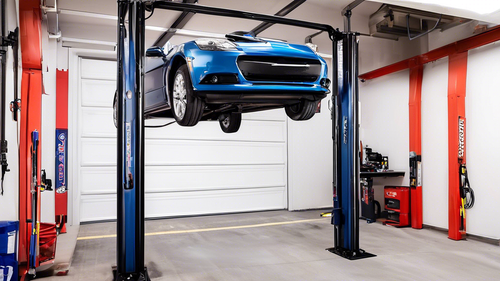
Preserving Memories: Expert Tips for Lasting Prints
Share
High-quality prints, carefully preserved and stored, are necessary for ensuring that cherished memories remain vibrant and intact for generations to come. Selecting the right paper and printing method, such as Epson's SureColor P700 with pigment inks, is essential for producing fade-resistant prints. Proper storage methods, using archival materials like acid-free storage options, and ideal environmental conditions, including controlled humidity and temperature levels, are important for longevity. Additionally, documenting prints with metadata and using preservation techniques like Mylar sleeves can safeguard memories. By following these expert tips, you can access the secrets to preserving your most treasured memories for years to come.
Key Takeaways
• Use high-quality prints produced with fade-resistant inks and archival materials to ensure longevity of cherished memories.
• Curate your photo collection by prioritizing quality over quantity and selecting images with historical and personal significance.
• Properly store prints in acid-free, lignin-free materials, and utilize preservation techniques like Mylar sleeves to shield from environmental degradation.
• Document each photograph with metadata, including who, what, where, when, and why, to preserve context and meaning for future generations.
• Store prints in climate-controlled areas with optimal humidity and temperature levels to prevent degradation and ensure lasting preservation.
Print Quality and Longevity Matters
Choosing high-quality prints is important, as the longevity of your cherished memories depends on the printing technology and materials used, with Nations Photo Lab offering prints that can last over 100 years in dark storage.
The evolution of printing technology has greatly impacted how prints age, making it vital to select the right paper and printing method. Nations Photo Lab's use of Kodak Professional Endura Premier Photo paper and Fujifilm Fujicolor Crystal Archive Super Type PDN ensures exceptional print quality.
The Epson SureColor P700 printer, paired with pigment inks, produces long-lasting prints that resist fading and degradation. A careful paper selection and advanced printing technology guarantee that your memories remain vibrant and intact for generations to come.
Curating Your Cherished Photo Collection
When selecting photos for preservation, it is vital to prioritize quality over quantity, choosing images that hold significant historical and personal value, such as those capturing special moments, milestones, and relationships. This process of curating your cherished photo collection is crucial in organizing memories and making sentimental selections.
| Category | Tips | Benefits |
|---|---|---|
| Sentimental Selection | Choose photos that spark joy and hold historical value | Focus on faces, places, and events |
| Organizing Memories | Limit photos saved for quality over quantity | Reduces clutter, emphasizes importance |
| Preservation | Pair each photo with an index card containing metadata | Captures vital information for future generations |
Safeguarding Your Prints for Generations
To secure the longevity of your printed memories, it is important to employ proper storage methods that protect your photographs from environmental and material degradation. Archival materials, such as acid-free, lignin-free, and dye-free storage options, are vital for preserving your prints.
Consider using products like Archival Methods's Short Top Boxes and Pioneer Photo Albums 3-Ring Photo Album, which offer safe and durable storage solutions. Additionally, utilize preservation techniques like Mylar sleeves to shield your photos from damage.
Documenting and Preserving Memories
Each photograph holds a unique story, and documenting the details surrounding the image is crucial for preserving its historical and personal significance.
To do this effectively, pair each print with an index card containing metadata. Capture essential information like who, what, where, when, and why using a No. 2 pencil to avoid damaging the photos. Archival Methods's All-Purpose Index Cards are ideal for this purpose.
This process, known as index card labeling, guarantees that the context and meaning behind each image are preserved for generations to come.
Store these paired prints and index cards in acid-free, lignin-free, and dye-free archival storage options, such as Archival Methods's Short Top Boxes, to protect them from degradation.
Ideal Storage Locations for Prints
Proper storage of prints requires consideration of the environmental conditions in which they are kept. Even slight fluctuations in temperature and humidity can greatly impact their longevity. Ideal storage locations should maintain optimal humidity levels between 30-50% and temperatures between 60-70°F (15-21°C).
Avoid areas prone to light exposure risks, such as direct sunlight or UV-rich lighting. Instead, opt for climate-controlled areas like living spaces or upstairs closets, which are less susceptible to flooding and extreme temperature fluctuations.
Avoid storing prints in basements or attics, where humidity and temperature extremes can cause damage. By selecting a suitable storage location, you can ensure your prints remain in pristine condition for generations to come.
Frequently Asked Questions
Can I Use Regular Paper to Print My Photos Instead of Special Paper?
When printing photos, using regular paper can compromise printing quality, as it may not withstand the test of time. Opt for specialized paper options, such as Kodak Professional Endura Premier or Fujifilm Fujicolor, designed to guarantee longevity and preserve memories.
How Often Should I Review and Update My Photo Collection?
To maintain a curated photo collection, establish an organizing system and schedule regular reviews, ideally every 6-12 months, to update family albums, photo books, and digital backups, ensuring cherished memories remain accessible and preserved.
Can I Store My Photos in a Fireproof Safe for Added Protection?
When considering fireproof safes for photo storage, note that high temperatures can still damage prints. Instead, prioritize climate-controlled environments and acid-free materials to guarantee preservation, and explore alternative safe storage options that balance security with photo-friendly conditions.
Are There Any Digital Options for Documenting and Preserving Memories?
For digital preservation, consider creating multiple backups on external hard drives, USB drives, and cloud storage services like Google Drive, Dropbox, or iCloud, ensuring redundancy and accessibility for future generations.
Is It Safe to Store Photos in a Climate-Controlled Storage Unit?
Storing photos in a climate-controlled storage unit is like placing a delicate flower in a greenhouse - it thrives under precise conditions. Guarantee the unit maintains consistent humidity levels between 30-50% and temperature fluctuations within 2-3°C to safeguard your cherished memories.
Related Posts
-

Can I Put a Car Lift in My 10-Foot Garage?
Can I Fit a Car Lift in My 10-Foot Garage? The Ultimate Guide Hey there, garage enthusiasts! If you're like me, yo...
-

Space-Saving Kitchen Design Ideas
You can change your cramped kitchen into a sleek, efficient space where every inch counts. Start by optimizing your w...

